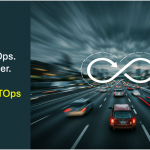In a world increasingly dominated by digital transformation, the “Cloud Collective Podcast” recently explored a topic of paramount importance to IT professionals and business leaders alike: the delicate balance between enterprise data centers and public cloud.
In conversation with Robert Erickson, VP of Strategy and Growth at Kyndryl, he shed light on this crucial subject in their episode titled “Striking a Balance: Optimizing Enterprise Data Centers and Public Cloud.”
The Current Landscape: Cloud vs. Data Centers
The move to the cloud has been one of the most significant shifts in IT strategy over the past decade. While the benefits of cloud computing are well-documented — scalability, flexibility, and cost-effectiveness — the journey is not without its challenges.
Less than 30% of mission-critical workloads are currently in the public cloud, a statistic that speaks volumes about the complexities involved in cloud migration.
Common Pitfalls in Cloud Journeys
Many organizations focus heavily on cloud technologies without first defining desired business outcomes. This risks sub-optimal results despite the cloud’s vast potential.
Beginning with complex, mission-critical system migrations also commonly backfires. Robert suggests starting small with low-risk cloud projects instead.
This provides invaluable hands-on experience before tackling business-critical workloads.
Similarly, companies often underestimate the challenges of moving legacy applications to the cloud. Dependencies, integrations, regulations, and security considerations can complicate matters.

Understanding the Balancing Act
Public cloud and private data centers have complementary strengths and weaknesses. Savvy IT advisors help clients strike the right balance between the two for their unique needs.
Public cloud delivers unmatched agility, instant access to innovations, and often a superior OPEX cost model. However, private data centers provide greater control, configurable security, and existing sunk costs.
The optimum balance depends on each organization’s priorities, legacy IT investments, regulatory requirements, and business objectives. Rarely does a one-size-fits-all cloud shift make good business sense.
Learning from Real-World Experiences
Start by collaborating to map out your specific goals and ideal outcomes from any cloud shift. This clarity then allows advisors to determine optimal public vs private workload allocation.
Next, learn the value from those with experience executing large-scale cloud transformations across various industries. This includes engaging consulting partners who can provide tailored strategies, hands-on guidance, and project management.
Start small by picking low-risk applications and data to migrate to public clouds. Ideally, focus on areas where the cloud brings unambiguous advantages before assessing more complex migrations.
Don’t avoid developing a tailored cloud adoption strategy with systems integrators.

For IT Outsourcing Sellers and Buyers: A Unique Perspective
If you’re an IT outsourcing service provider, this balance between cloud and traditional data centers is not just a technical challenge; it’s a business opportunity.
The service provider’s role is to guide their clients through this complex landscape, offering solutions that blend the best of both worlds.
Understanding the intricacies of cloud migration and data center optimization is crucial in positioning any services as essential for successful digital transformation.
Understanding the Client’s Perspective
Potential buyers, typically CIOs or IT managers, are under tremendous pressure to drive digital transformation while managing costs and ensuring security and compliance.
The ability to empathize with their challenges and offer solutions that balance innovation with risk management will set you apart in this competitive field.
Crafting Your Value Proposition
Drawing from the podcast, the value proposition should focus on how your services facilitate a seamless transition to the cloud, manage risks, and optimize existing data center resources.
Emphasize expertise in creating a modern operating model that aligns IT, finance, and business teams.
Building Relationships Through Insights
Engage by starting meaningful conversations with potential clients. Discussing the insights and challenges presented in the episode can help you understand your client’s needs better and tailor your services accordingly.

Conclusion: Striking the Right Balance
As the podcast episode “Striking a Balance: Optimizing Enterprise Data Centers and Public Cloud” aptly demonstrates, the journey to a balanced IT infrastructure is complex but achievable. For IT outsourcing service providers, understanding and articulating this balance is key to attracting and retaining clients in a rapidly evolving digital landscape.
Deep Dive Opportunities:
- Connect with Robert on LinkedIn for more insights and updates on enterprise cloud computing.
- Read the Wall Street Journal article “The Cloud Isn’t The Answer to All IT Problems — At Least for Now” (By Steven Rosenbush, 2023), highlighting how less than 30% of mission-critical workloads are currently in the public cloud.
- Check out Robert’s upcoming blog posts expanding on optimizing cloud and data centers.






Leave a Reply